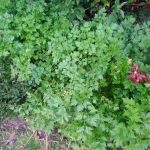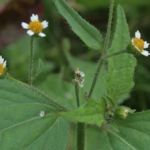Elder, Sambucus nigra is flowering now, although it is not common north of the Volcanic Plateau in New Zealand. But it is very common south of the Plateau and in the South Island. I wanted an elder bush because all parts of it are so healing. When I saw plants in Northland, I took cuttings and now have a flowering shrub, proving it can grow here in the Bay of Plenty. It was growing ‘like a weed’ in Canterbury where I’ve just been. We picked and dried the flowers. I will use it for tea.
It is a deciduous shrub growing up to 6m tall, with large leaves divided into
five to seven leaflets. The creamy white flowers grow in a dense flattish group, and both leaves and flowers have a distinctive smell. Clusters of drooping black fruits follow the flowers, known as elderberries.
Elder likes to grow on forest margins, regenerating land and waste places. It is native to Africa, West Asia and Europe, where it grows prolifically, my brother in Denmark tells me.
This is a plant of contrasts, having been used in Israel in Jewish rituals of the Kabbala, while in Britain it
was used to deter flies growing next to the privy, before the days of indoor sanitation. It is sacred to the Gypsies, who would never burn the wood of a plant they revere. Young elder wood can be hollowed out and used to make wind instruments, while the old wood is as hard as metal and was used to make nails for the soles of shoes.
In Scandinavian folklore, it is said that elder should never be harvested or cut without first asking the elder tree mother, Hylde-Moer. And there is a saying in Denmark “Where the elder doesn’t grow, the farmer can’t live”.
From the first great doctor Hippocrates to modern day herbalists, elder has a long history of medicinal use. The roots, washed and soaked, produce a juice used to treat lymphatic problems. One can also shave
the roots and make a tea for kidney ailments. The inner bark, taken from old branches, made into a powder and steeped has been used as a remedy for epileptic fits. Brewing up the leaves alleviates eczema and baby rashes. The beautiful flowers as a tea, help with colds, coughs, lung infections and to sooth burns. One can also use it as an anti-inflammatory lotion for the irritated skin and eyes. Juliette de BaÏracli Levy says it even restored sight to a man’s eyes, where the nerves were affected by the shock of bomb blasts. The berries pounded up in honey, are soothing and healing for sore throats and coughs. They also have a gentle laxative effect. With all these healing qualities, no wonder elder has been called ‘the medicine chest of the people.”
Elderflower Cordial
20 flower heads without stalks, 2 tablespoons of citric acid, juice of 1 lemon. 1kg cane sugar or 500gm cane sugar and 500gm soft brown sugar (which makes it tasty). 1 L boiling water. Pour the boiling water over all the ingredients. Put it in a cool place and let it stand covered for 4 to 5 days. Then you sieve it all and bottle it. To make it into a drink dilute the syrup to taste.
You can reuse the flowers in a second batch in which you halve the ingredients. Or you can dip the flowers into a batter and make fritters. This is also good with fresh flowers still with stalks, which can be used as a handle for dipping in the batter and then the oil.
References:
de BaÏracli Levy, J.(1974), The Illustrated Herbal Handbook. London:Faber & Faber.
Brown, D. (2001). Herbal: The essential guide to herbs for living. London: Pavilion Books.








Dear julia; are elderflower available to buy from you..
Hi Carol, yes I have some I dried and I can sell you some. How much are you wanting? Julia